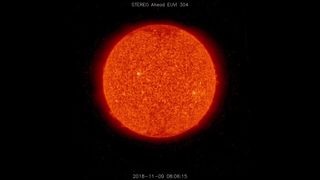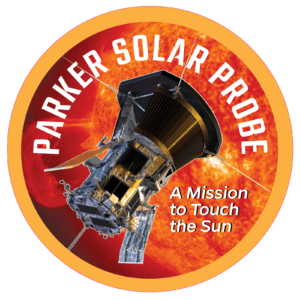Parker Solar Probe: Humanity’s First Visit to a Star

NASA's historic Parker Solar Probe mission is revolutionizing our understanding of the Sun, where changing conditions can propagate out into the solar system, affecting Earth and other worlds. Parker Solar Probe travels through the Sun’s atmosphere, closer to the surface than any spacecraft before it, facing brutal heat and radiation conditions to provide humanity with the closest-ever observations of a star.

Journey to the Sun
Launch: Aug. 12, 2018
Launch Site: Cape Canaveral Air Force Station, Florida
Launch Vehicle: Delta IV-Heavy with Upper Stage
In order to unlock the mysteries of the Sun's atmosphere, Parker Solar Probe uses Venus’ gravity during seven flybys over nearly seven years to gradually bring its orbit closer to the Sun. The spacecraft will fly through the Sun’s atmosphere as close as 3.8 million miles to our star’s surface, well within the orbit of Mercury and more than seven times closer than any spacecraft has come before. (Earth’s average distance to the Sun is 93 million miles.)
Flying into the outermost part of the Sun's atmosphere, known as the corona, for the first time, Parker Solar Probe employs a combination of in situ measurements and imaging to revolutionize our understanding of the corona and expand our knowledge of the origin and evolution of the solar wind. It also makes critical contributions to our ability to forecast changes in Earth's space environment that affect life and technology on Earth.
Extreme Exploration
At closest approach, Parker Solar Probe hurtles around the Sun at approximately 430,000 mph (700,000 kph). That's fast enough to get from Philadelphia to Washington, D.C., in one second.
At closest approach to the Sun, the front of Parker Solar Probe's solar shield faces temperatures approaching 2,500 F (1,377 C). The spacecraft's payload will be near room temperature.
On the final three orbits, Parker Solar Probe flies to within 3.8 million miles of the Sun's surface — more than seven times closer than the current record-holder for a close solar pass, the Helios 2 spacecraft, which came within 27 million miles in 1976, and about a tenth as close as Mercury, which is, on average, about 36 million miles from the Sun.
Parker Solar Probe performs its scientific investigations in a hazardous region of intense heat and solar radiation. The spacecraft will fly close enough to the Sun to watch the solar wind speed up from subsonic to supersonic, and it will fly though the birthplace of the highest-energy solar particles.
To perform these unprecedented investigations, the spacecraft and instruments are protected from the Sun’s heat by a 4.5-inch-thick (11.43 cm) carbon-composite shield, which needs to withstand temperatures outside the spacecraft that reach nearly 2,500 F (1,377 C).
The Science of the Sun
The primary science goals for the mission are to trace how energy and heat move through the solar corona and to explore what accelerates the solar wind as well as solar energetic particles. Scientists have sought these answers for more than 60 years, but the investigation requires sending a probe right through the 2,500 degrees Fahrenheit heat of the corona. Today, this is finally possible with cutting-edge thermal engineering advances that protect the mission on its dangerous journey. Parker Solar Probe carries four instrument suites designed to study magnetic fields, plasma and energetic particles, and image the solar wind.
Teaming for Success
Parker Solar Probe is part of NASA’s Living With a Star program to explore aspects of the Sun-Earth system that directly affect life and society. The Living With a Star flight program is managed by the agency’s Goddard Space Flight Center in Greenbelt, Maryland, for NASA’s Science Mission Directorate in Washington. The Johns Hopkins University Applied Physics Laboratory in Laurel, Maryland, manages the mission for NASA. APL is designed, built, and operates the spacecraft.
Why do we study the Sun and the solar wind?
The Sun is the only star we can study up close. By studying this star we live with, we learn more about stars throughout the universe.
The Sun is a source of light and heat for life on Earth. The more we know about it, the more we can understand how life on Earth developed.
The Sun also affects Earth in less familiar ways. It is the source of the solar wind; a flow of ionized gases from the Sun that streams past Earth at speeds of more than 500 km per second (a million miles per hour).
Disturbances in the solar wind shake Earth's magnetic field and pump energy into the radiation belts, part of a set of changes in near-Earth space known as space weather.
Space weather can change the orbits of satellites, shorten their lifetimes, or interfere with onboard electronics. The more we learn about what causes space weather – and how to predict it – the more we can protect the satellites we depend on.
The solar wind also fills up much of the solar system, dominating the space environment far past Earth. As we send spacecraft and astronauts further and further from home, we must understand this space environment just as early seafarers needed to understand the ocean.